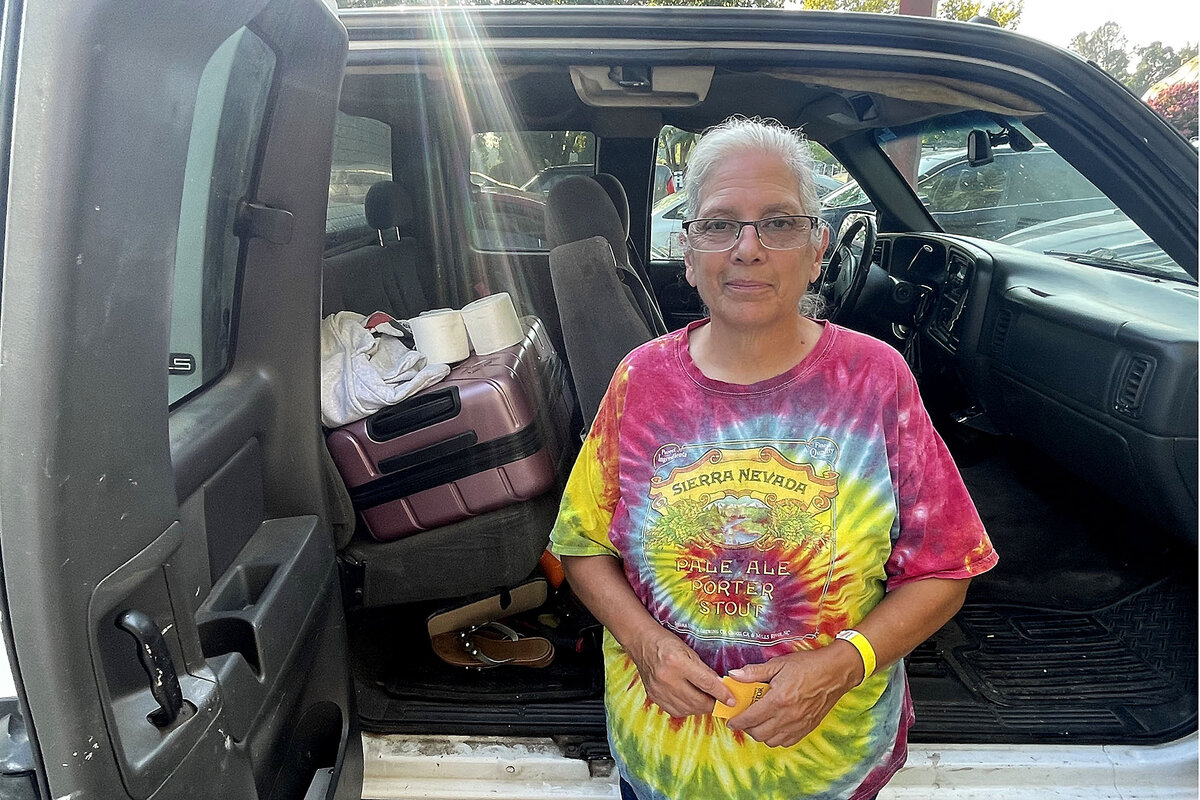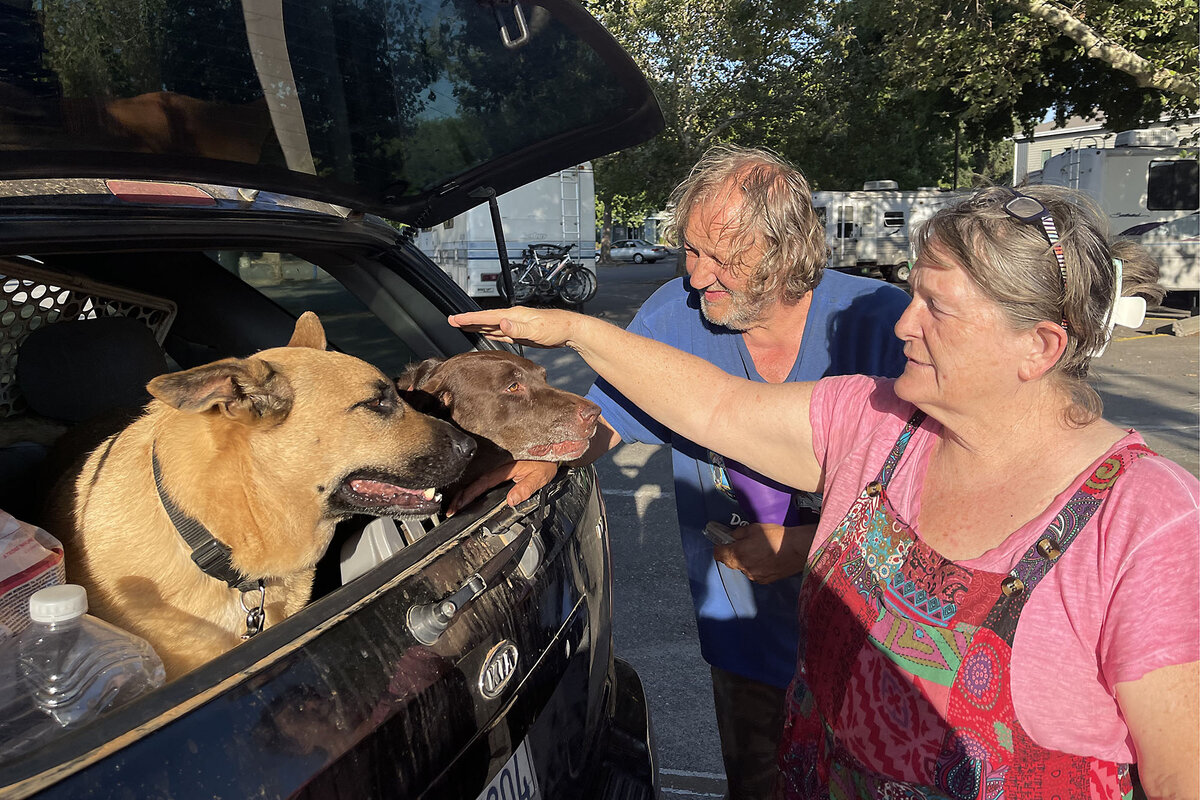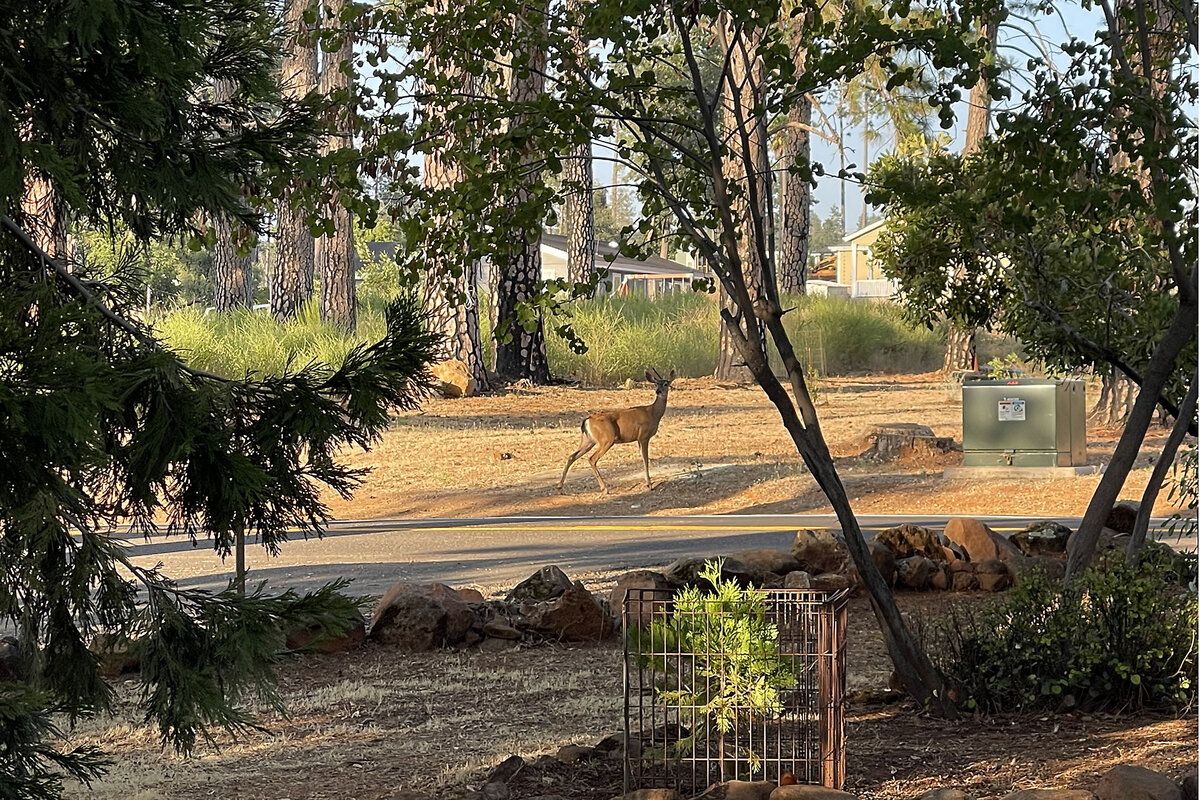Staying alive: Why Californians are escaping nation’s biggest wildfire
Loading...
| Chico, Calif.
Adora Molina knows fire. Six years ago when a fire raged through her town of Magalia, California, she waited until the last minute to evacuate. Her car wasn’t working that morning. So her husband, who had left for work already, defied authorities to go back to the house to get her.
This time, when an evacuation warning came, they grabbed their go bags and left right away.
Like other residents facing wildfires this week – the Quarry Fire in Colorado’s Jefferson County and others now burning in the West – she and her husband went in search of emergency shelter.
Why We Wrote This
Wildfires, like other extreme events, teach important lessons in safety and adaptation. In the recent Park Fire, which has burned some 400,000 acres, more Californians are now heeding evacuation orders and leaving danger zones swiftly.
The Park Fire, burning in Northern California since July 24, has consumed nearly 400,000 acres and is the largest active wildfire in the United States. Thousands of people living in the communities that dot this forest landscape have evacuated their homes – seeking refuge in hotels, with friends or relatives, or in emergency shelters like one at the Neighborhood Church here in the city of Chico.
After three days at the evacuation shelter, Ms. Molina says she’s tired but grateful for food and a safe place to rest. She’s ready to go home. But the fire could shift at any moment – and they’re not taking any chances.
Devastating as it is, people are adapting. Residents like Ms. Molina are paying closer attention to – and heeding – evacuation orders and getting better at swift exits from danger zones. Many current evacuees survived the 2018 Camp Fire, which killed 85 people and destroyed the town of Paradise, just 20 minutes away. So they have learned wildfire lessons as well.
While the lessons have gone beyond the public’s obedience and speed in response to official warnings, it’s notable that in the current wildfire here, no deaths have been reported. Residents may be weary as well as wary. But they are also resilient.
“Communities that surround a park footprint ... have had a lot of exposure,” says Yana Valachovic, a scientist and wildfire adviser.
No strangers to wildfire
In fact, the Park Fire is one of the largest in state history, spanning four California counties.
Living at the nexus of five national forests, where wildfire is a near-constant risk, people affected by the fires have in some cases escaped with their lives but little else.
“We burned out. We don’t have nothing left on the property,” says Susan Singleton, who evacuated the home she shares with her partner in Cohasset. This time, when the fire began raging through their community, they got out with their seven dogs and a few other things that fit in their small SUV.
People from Cohasset, Magalia, and other towns under threat have arrived in cars, trucks, and motor homes to set up camp in the sprawling church parking lot nearby. The Red Cross supplies three meals a day, showers, and cots that fill a large church hall.
Growing fire, growing awareness
More than 70,000 communities and 44 million homes reside in wildland urban interface zones, and experts say that wildfire threats are growing. The frequency of extreme fires has more than doubled since 2003, according to a May 2024 paper in Nature.
Residents in wildfire areas of California and Oregon are well aware of the threat: Eighty-four percent are concerned about wildfire’s effects, according to a recent survey.
“They perceive that they have a risk,” says Michele Steinberg, wildfire division director at the National Fire Protection Agency (NFPA), which conducted the study. ”And they’re relatively motivated to do something about it.”
Education is a challenge. Only half of residents in these vulnerable areas say they know how to protect their homes from wildfire – even here in California, which has had decades of policies aimed at fire mitigation. And fewer than half of those surveyed regularly take simple steps – such as clearing flammable items from their home’s perimeter, thinning trees, and keeping gutters clear of debris – to protect their homes, and themselves.
“That is where people are getting stuck,” says Ms. Steinberg. “The biggest reasons are affordability and not knowing what to do.”
Education and marketing campaigns aim to move the preparedness needle. Programs like the NFPA’s Firewise USA illustrate commonsense steps that prevent or slow the spread of fire, and government agencies like Cal Fire offer checklists.
“This will happen”
Ms. Valachovic, the wildfire consultant, says recognition and awareness in high-risk communities is an important first step. She, too, has her eye on education: Ms. Valachovic, also a county director for the University of California Cooperative Extension, recently taught 30 K-12 teachers about fire adaptation.
The insurance industry, she adds, is forcing conversations about home protections amid a crisis in homeowners insurance, related in part to extreme disaster payouts.
Adaptation, she explains, means people who live in wildfire zones can start to replace worry with preparation. They think, “This will happen. I’ve got all my stuff. My house is ready. My community knows what to do ... and I’ve got my act together,” she says.
Ms. Molina, the Magalia resident who retreated to shelter, shows similar determination.
“It’s so out of control right now, this fire,” she says. Still, she wouldn’t live anywhere else and plans to return home. The pull of home and family is stronger than her fears.
“My feet are grounded here,” says Ms. Molina. “My kids are here; my grandkids are here. ... I mean, wherever you move, you’re going to take risks.”









